
Updated: December 30, 2021
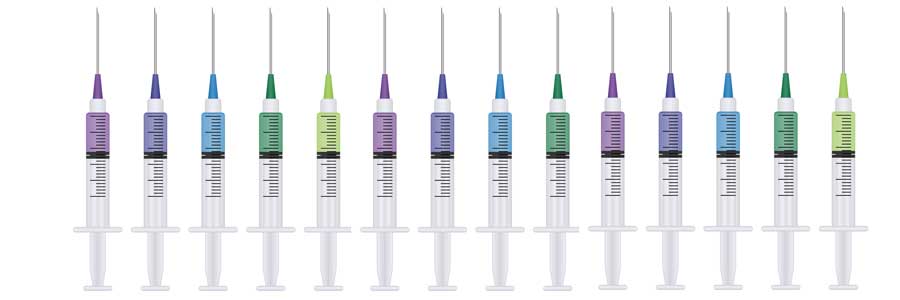
Most of us can recognize a syringe, with a needle sticking out of a long plastic body. For many, it is a childhood horror that they can never forget! While your early years may have been spent dreading a needle, your teens or adulthood might require you to keep a supply of syringes ready to administer a doctor-prescribed medication. When you start your own family, you may need a supply of needles for a family member to treat a medical condition. In this case, not only do you need to forget your old dread of this small medical device, but you will also need to know how to use it. Most importantly, you need to know that not all syringes are the same. There are different designs to meet different purposes.
Types of Syringes
Syringes are available in several different designs and varieties. Most are disposable, and many come with an attached needle or with no needle at all. You may select the size of the syringe by the volume of medication it holds. Below is an image depicting the parts of a syringe.
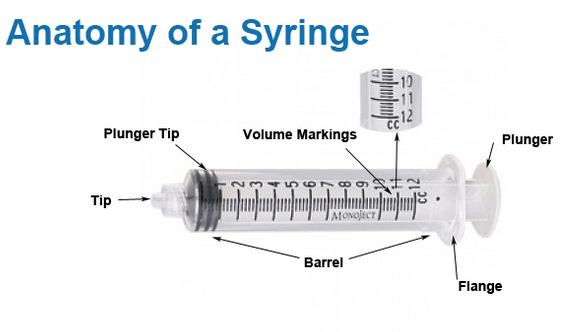
Selecting Syringes
Select syringes based upon the volume of medication prescribed and the desired pressure flow. Marked on the barrel is the amount of medication the syringe can hold, measured in centimeters (cc) or milliliters (mL). Both types of measurements are equivalent in volume. One cc is the same as a 1 mL. Large quantities of medication require larger syringe sizes. A need for lower-pressure flows also requires a larger size. Whether the syringe is needed for injection, irrigation, or use with medical tubing is also a factor in syringe selection. A prevalent type is the U-100 insulin syringe. It is a low-volume syringe commonly used for diabetic medications. This syringe is for one-time use only and is thus a very low-cost syringe. Below is an infographic of a continuum depicting syringe sizes matched with corresponding usage -- injections, medical tubing, or irrigation.
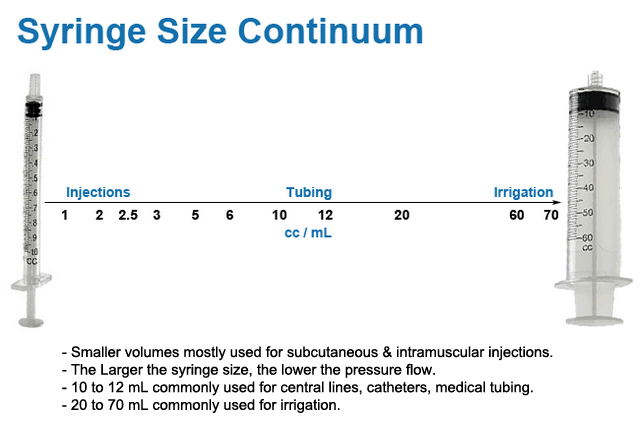
Syringe Tips
There are five basic types of syringe tips. The first and most popular is the Luer lock, which has a tip that allows the removal and reattachment of the needle. Disconnecting or attaching the needle is easy and quick. The needle hub locks to the syringe tip with a push and a twist. The twisting motion locks the needle hub into place. This twist mount helps secure the needle to the syringe for better safety and stability.
A slip tip syringe is also very common. The user may push the needle hub onto the syringe. Friction holds the needle hub in place on the syringe tip. There is no locking function like that found on the Luer lock.
Use eccentric tips when you need to administer a medication parallel to the skin of the patient. Use these tips when you want to inject into a surface vein without having the needle penetrate through both vascular walls. Aspiration of liquid medications is also effortless with this type of syringe.
Catheter tip syringes are useful for wound irrigation, for flushing medical tubing. Medical manufacturers make catheter tips with a tapered end to allow catheters to slip on and off of the tip.
The last type of tip is a syringe with a permanently attached needle. Frequently used for low-dose applications, these devices decrease medication waste. It is also disposable after use, making cleanup a snap. Tuberculin and insulin injections are popular with this syringe type.
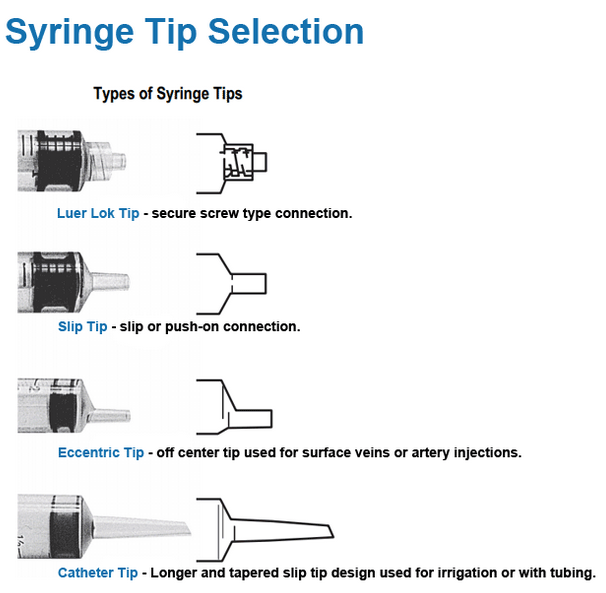
Selecting Needles
Needles have a simple design with a hollow center, sharp point, and a hub that affixes to the syringe. Needle shafts come in varying lengths measured in inches. Guage sizes measure the thicknesses or diameter of the needle. Needle tips most often have a beveled tip to provide easier cutting or puncturing. Many needles come with a cap to protect the caregiver during the transition from package removal to needle use.
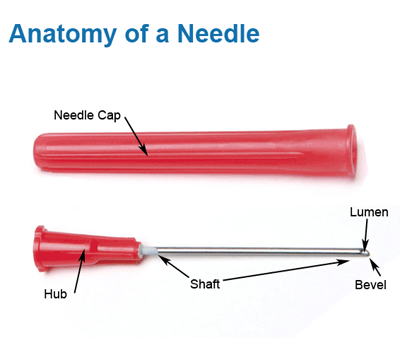
The criteria for selecting the right needle has three primary considerations--gauge, length, and use. Needle gauge measures the width or diameter of the needle. Length measures from the hub to the tip of the needle. Needle use refers to how deep the needle must traverse to reach the target injection area. These injection depths include intradermal (dermis injections), subcutaneous (subcutaneous tissue injections) and muscle (intramuscular injections.
Choosing the Needle Gauge
Selecting needles by gauge size occurs by considering skin or hide thickness and the depth of the injection. The needle gauge is a series of numbers in which the lower the number, the wider the diameter of the needle. The higher the gauge number, the smaller the needle width. On the other hand, smaller numbers denote a larger diameter or width. Larger-diameter gauges have thicker needle walls and are stronger and more durable. Select a higher gauge number to administer more viscous medications and to support denser skin penetration. Select a lower gauge number when using a high-viscosity medication. Fine gauge needles (small diameter) offer less pain for the patient and accommodate low-viscosity medications. The most common needle gauges are 26 and 27. This gauge range adapts to all three types of injections -- intradermal, intramuscular, and subcutaneous. See the Needle Gauge Continuum below for more details.
Choosing the Right Needle Length
Standard needles vary in length from 3/8 inch to 3 1/2 inches. The location of the administration determines the needle length required. Generally, the further the depth of the injection, the longer the needle. Intramuscular injections require extended needle lengths. Needle lengths for intramuscular injections are usually 7/8 to 1 1/2 inches. Subcutaneous injections call for a needle length of 1/2 inch to 5/8 inch. Intradermal injections require a needle length of 3/8 inch to 3/4 inch. The 1/2- and 5/8-inch needles are the two most common needle lengths and span both intradermal and subcutaneous injections. Below are three graphics to help select which is the best needle for your needs.
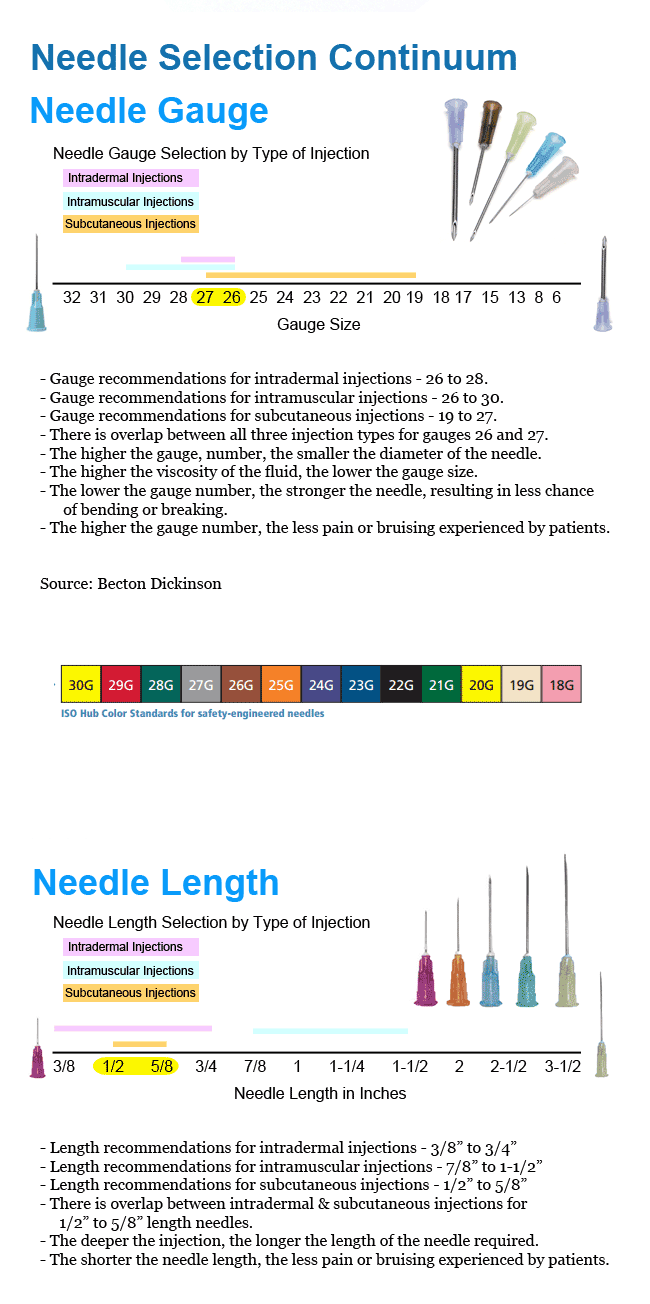
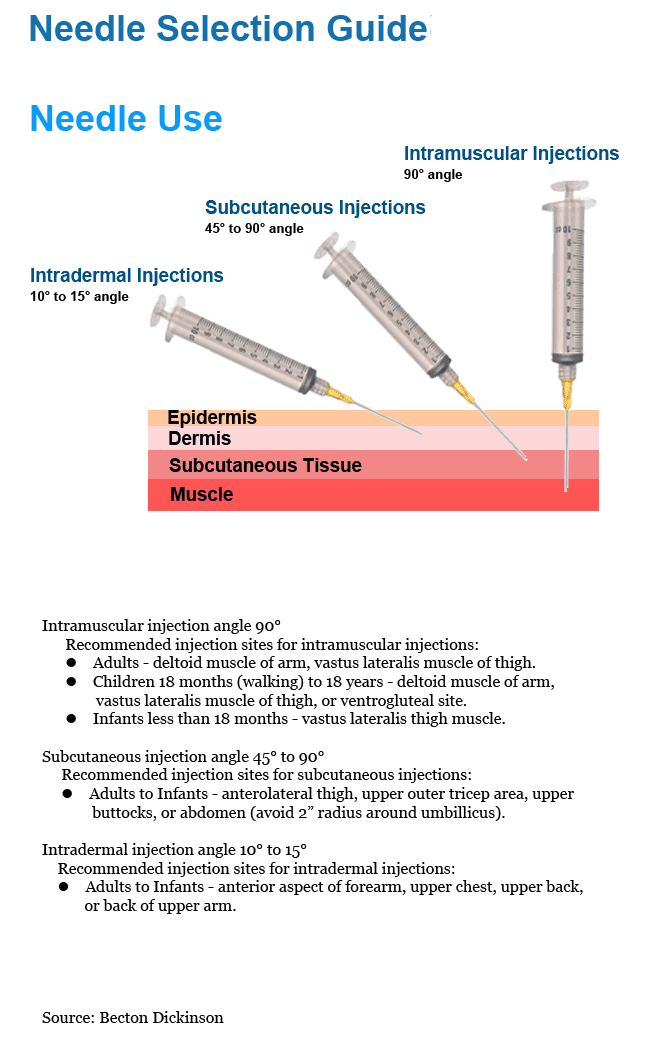
Purchasing Syringes and Needles
When you buy syringes, it is essential that you know which one you need. Are you using the syringe with needle for intradermal injections, intramuscular injections, or subcutaneous injections? The needle gauge and needle length selection are different for each type of injection. Below is a quick list of the selection criteria used for purchasing a syringe and needle.
- The volume of medication to be administered determines syringe size.
- Type of needle hub used determines the syringe hub (Luer lock, slip tip, eccentric tip, or catheter tip)
- The viscosity of the medication determines the needle gauge.
- Location of the injection determines needle gauge and needle length.
Make sure you know your needs before shopping!

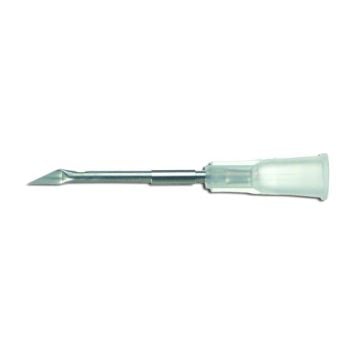

Login and Registration Form